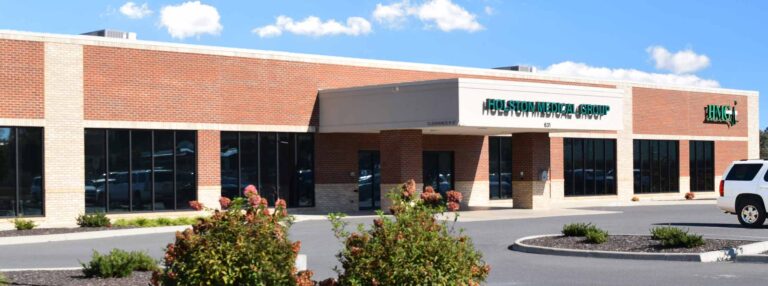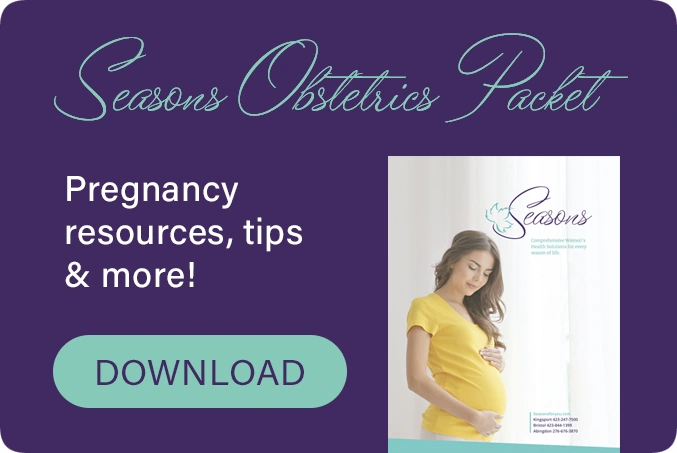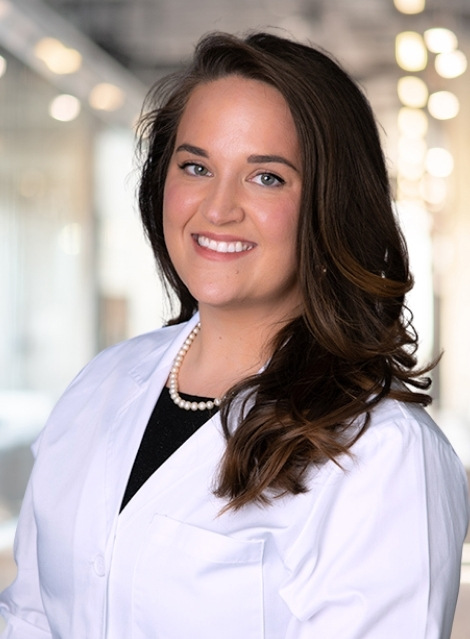At Holston Medical Group, we’re pleased to provide the women with leading-edge women’s healthcare that continually exceeds expectations. Our women’s health super-group Seasons for Women celebrates the remarkable transformation that takes place in every “season” of a women’s life.
In fact, we recognize, and even welcome, the sensitive nature of women’s health. From the dawn of adolescence through the maturity of wisdom and age, our desire is that of walking with you along your journey, providing comprehensive women’s health solutions for every season of life.
Leading in Innovative Medicine
Our provision of leading-edge care distinguishes our care from other women’s health providers. We’re never satisfied with yesterday’s results. Instead, we’re constantly scanning the horizon, staying abreast of revolutionary procedures and conveniences available today.
You’ll find that our providers continually perform the latest, minimally invasive women’s health procedures and surgeries. Often, our specialists serve as physician trainers for many new, innovative techniques – providing hands-on surgical training to OB/GYN colleagues throughout Northeast Tennessee & Southwest Virginia.
Our Providers
In-Office Procedures
Minimally-invasive and can be done safely and conveniently in the office
-
Colposcopy
A colposcopy is often the very next step when you have an abnormal pap smear. While the first thought of many women is often – cervical cancer – fortunately, the majority of abnormal pap smears are caused by inflammation or vaginal infection.
A colposcopy is a very simple 10 to 15 minute procedure. It’s performed in the comfort of our Seasons’ office, much the same way as a pap smear.
The procedure begins by applying a vinegar solution to your cervix. Then, your Seasons’ doctor will use a colposcope, which is basically an electric microscope, to view your cervix.
If any abnormal areas are noted, a tissue sample or biopsy will be taken and sent to a lab for evaluation. You can expect your results in approximately 7 working days.
You’ll be happy to know that the colposcopy itself a painless procedure. However, due to the mild cramping that may follow the exam, it is often advisable to take ibuprofen (with food) an hour before the procedure.
Please avoid strenuous exercise or intercourse for approximately a week after the procedure. Baths and showers are permitted. Please also note that this exam cannot be performed if you are currently on your menstrual cycle.
-
Cystometrogram
If you are experiencing urinary stress incontinence or other bladder issues, your Seasons’ provider may suggest a cystometrogram (CMG).
Performed in the comfort of our office, a CMG is a simple procedure that only takes about 20 minutes. Your doctor will insert a tiny catheter into your bladder. Then, your bladder will be filled with a sterile solution that will make it possible to evaluate your bladder function.
With your CMG results, your Season’s gynecologist will be able to determine the best treatment for you.
If you are currently on medication for your bladder, please make sure you talk with your doctor about this to determine whether you should discontinue your medications for a few days prior to your If you are currently on medication for your bladder, please make sure you talk with your doctor about this to determine whether you should discontinue your medications for a few days prior to your CMG exam. That’s it. No other preparation is needed prior to your CMG.
-
Endometrial Ablation
An endometrial ablation is a remarkable procedure that is often an excellent alternative to a hysterectomy.
This simple procedure does not require any incisions and is performed in the comfort of our office. Best of all, the downtime following the procedure is quite minimal.
-
Endometrial Biopsy
If you are experiencing abnormal uterine bleeding, your Seasons’ provider may perform an endometrial biopsy to investigate the cause of the bleeding.
During an endometrial biopsy, tissue samples are taken from the inside of the uterus, using a thin, hollow catheter.
Because this procedure can cause momentary cramping, we suggest you take ibuprofen (with food) one hour prior to your exam. Fortunately, the cramping is often short-lived and subsides quickly.
It’s important to note that your period may be heavier than usual following the procedure. Also, you should not douche or engage in intercourse for five days following the biopsy. Bathing and showering is permissible.
-
Intrauterine Device (IUD)
An intrauterine device, also called an IUD, is a very small, plastic, flexible device that is shaped like a T. It also has a string attached to the end of it. (The string hangs out of the cervix so that you can check every once in a while to make sure the IUD is still in place.)
During an office visit, your Seasons provider will place the IUD inside your uterus to prevent pregnancy. The IUD will remain in your uterus until it is removed by your doctor.
The IUD works to prevent the sperm from joining with the egg. There are several types of IUDs available in the United States and it is recommended that you talk with your Seasons provider to determine which type is best for you.
Depending upon the type of IUD chosen, pregnancy can be prevented for up to 3 to 10 years.
For many, the IUD is a good choice due to the fact that it is effective, convenient and also, inexpensive. Please talk with your Seasons provider to discuss any health risks involved and to determine if you are a good candidate for an IUD.
-
LEEP Excision of the Cervix
LEEP is an acronym for “loop electrosurgical excision procedure.” This procedure is often recommended after abnormal pap test results have been confirmed by a colposcopy.
During LEEP, abnormal cells are cut away from the cervix using a thin wire loop through which an electrical current is passed. The biopsied tissue is then sent to a pathologist for review. Typically, you will receive pathology results within seven office days.
Prior to LEEP, it is recommended that you take ibuprofen (with food) one hour prior to your scheduled exam. The ibuprofen will help with the mild cramping that may follow the procedure. Additionally, for your comfort during the procedure, your Seasons’ provider will place a local anesthetic.
While recovery depends upon the extent of the procedure, typically, women return to light to normal activities within one to three days. It is important that you avoid intercourse, douching, tampons, and strenuous activities for four weeks following LEEP.
-
Sonohysterogram
The best time to perform a sonohysterogram is approximately a week after the start of your menstrual cycle. Please note, this procedure cannot be performed during your period, or if there is a possibility that you might be pregnant.
During the procedure, a thin catheter will be inserted through the opening of your cervix, placing the catheter inside the endometrial cavity. The catheter will be used to insert a small amount of sterile saline solution inside your endometrial cavity.
Following, ultrasound (an internal scan of your uterus) will be performed, via your vagina.
Thankfully, this procedure involves minimal discomfort, if any. For those who do experience pain, it is often described as “mild cramping” similar to menstrual discomfort. It is suggested that you take ibuprofen (with food) one hour prior to the procedure to minimize your discomfort.
Outpatient & Hospital Procedures
Procedures performed at a hospital, both inpatient and outpatient.
-
Hysterectomy
By definition, a hysterectomy is the removal of the uterus. Your Seasons provider will talk with you concerning a variety of factors that will help determine the type of hysterectomy that will be best for you.
Your recovery time and discomfort will vary based upon the type of hysterectomy your surgeon recommends.
Abdominal Hysterectomy
During an abdominal hysterectomy, your Seasons surgeon will make an incision in your abdomen, similar to a cesarean section. The surgeon will use this incision to remove the uterus and other reproductive organs (if necessary).
A benefit of the abdominal hysterectomy is that it gives the surgeon an excellent view of the uterus and other reproductive organs. It also allows for the removal of large fibroids. Because the surgeon has plenty of room to work, he or she is able to view any scarring from previous surgeries.
Unfortunately, an abdominal hysterectomy does leave a scar, has a longer recovery time, and involves more discomfort.
Vaginal Hysterectomy
A vaginal hysterectomy, as suggested, means the uterus is excised and removed through the vagina. During this type of hysterectomy, your Seasons’ surgeon will make an incision near the top of the vagina. Your surgeon will use this incision to cut and tie off ligaments, blood vessels, and fallopian tubes.
The surgery and hospital stay are typically shorter than with an abdominal hysterectomy. Additionally, women are able to return to normal activities within about four weeks. A vaginal hysterectomy is a less invasive experience and offers minimal scarring. As would be expected, this type of hysterectomy involves less discomfort.
-
A/P Repair
Anterior and posterior repairs are procedures used to correct vaginal prolapse for either a fallen bladder (cystocele) or a fallen rectum (rectocele). Vaginal prolapse occurs when the ligaments and muscles of the vagina begin to fail. During an a/p repair, incisions are made in the top (anterior) or bottom (posterior) of the vagina. The muscular tissue underneath the vaginal skin is tightened to better support the bladder or the rectum.
This procedure is performed using either general or spinal anesthesia. Following the surgery, you may have a foley catheter in place for one to two days. You will be started on a liquid diet, followed by a regular diet when your normal bowel function returns. Your Seasons provider may prescribe stool softeners and laxatives to prevent straining during bowel movements. (Straining can potentially cause stress on the incision.)
-
Bilateral Tubal Ligation
A bilateral tubal ligation is commonly referred to as having your “tubes tied.” During this procedure (while you are under general anesthesia), one or two small incisions are made in the abdomen (usually near the navel), and a small instrument called a laparoscope (similar to a telescope on a flexible tube) is inserted.
Using instruments that are then inserted through the laparoscope, the fallopian tubes are sealed shut. This process virtually blocks the fallopian tubes. It prevents pregnancy by blocking the egg from traveling to the uterus, and by preventing the sperm from traveling through the fallopian tubes.
Following the outpatient procedure, the skin incision is closed. Most often, you are feeling well enough to return home within a few hours.
Most women are able to return to normal activities within a few days.
-
Diagnostic Laparoscopy
During a diagnostic laparoscopic procedure, your Seasons provider will be able to view your abdomen or pelvis (including the gallbladder, appendix, liver, large bowel, small bowel, fallopian tubes, ovaries, and uterus). Your Seasons surgeon will typically use diagnostic laparoscopy to determine if a problem exists that has not been discovered with other noninvasive diagnostic tests.
The procedure is performed under general anesthesia, either in the hospital or on an outpatient basis.
Making a small incision below your navel, a narrow, flexible tube (a device similar to a small video camera telescope) is inserted inside your abdomen, giving your Seasons provider the ability to view inside your body. Additional small incisions are also made if other instruments are needed to give your surgeon a better view of specific organs.
In the case of gynecologic laparoscopy, your surgeon may utilize dye injected into your cervix so that he or she can have an improved view of your fallopian tubes.
-
Laparoscopic-Assisted Vaginal Hysterectomy
A laparoscopic-assisted vaginal hysterectomy enables your surgeon to better see the uterus and surrounding tissues during the surgical removal of the uterus through the vagina. An LAVH involves several very small incisions in the abdomen, in addition to a small incision just below the navel.
A thin, lighted, telescope-like instrument (which acts like a video camera) is inserted through the incision just below the navel. The surgeon is then able to view inside the uterus using a monitor.
Small instruments are inserted through the other two small incisions in the abdomen. These instruments are used to cut and tie off the blood vessels, fallopian tubes, and ligaments. The surgeon will then remove the uterus through the vagina.
Typically, with an LAVH surgery, the hospital stay is a day or two, and recovery is approximately two weeks.
-
Laparoscopic Hysterectomy
Laparoscopic Supracervical Hysterectomy (LSH)
A Laparoscopic Supracervical Hysterectomy (LSH) is a laparoscopic hysterectomy that removes the uterus but preserves the cervix. Like other laparoscopic hysterectomies, two or three small incisions are made in the abdomen, as well as one just below the navel. Using the instruments, guided by the lighted laparoscope (which acts like a camera), the surgeon carefully separates the uterus from the cervix and then removes it through one of the openings.
The LSH, (as well as the LH), was developed for the purpose of reducing pain, minimizing scarring, and shortening the recovery time. This procedure can be performed outpatient, giving you the ability to be back home, and resting comfortably less than 24 hours after the surgery. Most women are able to return to normal activities in approximately one week.
Total Laparoscopic Hysterectomy (LH)
A total laparoscopic hysterectomy is performed just like a laparoscopic supracervical hysterectomy (LSH). The primary difference is that both the uterus and the cervix are removed.
Like the LSH, the LH is beneficial in that it involves reduced pain, minimal scarring, and a shorter recovery time. Performed on an outpatient basis, most women return to normal activities in approximately one week.
-
Robotic Surgery
Seasons for Women leads the region in the advancement of robotic surgery. Utilizing the revolutionary da Vinci® Surgical System, Seasons for Women, with a total of five surgeons now trained on the da Vinci, is the largest women’s health group in the Tri-Cities utilizing this advanced surgical technology.
The da Vinci® utilizes and enhances a surgeon’s own skill by providing a radically less-invasive option for procedures that, in years past, would have previously required major surgery, accompanied by extensive downtime.
-
Tension-Free Vaginal Tape & Transobturator Sling
Stress urinary incontinence (the leaking of urine when coughing, sneezing, or moving) is quite common among women, especially following childbearing and as a part of aging. At Seasons, we’re pleased that TVT (tension-free vaginal tape) and TOT (transobturator sling) are minimally-invasive surgical options that will support the urethra and work to help stress urinary incontinence.
Both TVT and TOT prevent leaking by mimicking the ligaments that previously supported the urethra, but have since weakened through childbirth or with age. The tape stays in place permanently and is not removed.
Performed under local anesthesia, this outpatient procedure takes only about 30 minutes to complete. Because both TVT and TOT are most often same-day procedures, patients enjoy the ability to return to daily activities quite rapidly.
Gynecology & Menopausal Medicine
We are equipped to provide a full spectrum of care with a lifelong approach to wellness.
At Seasons, we lead the region in gynecologic & menopausal medicine. In fact, we were the first women’s health practice within the region to have a member of its team receive certification from The North American Menopausal Society.
Services Provided for Gynecology & Menopausal Medicine
- Annual well woman exams
- Pap Smears
- Vaccines (Gardasil, Twinrix, Adacel)
- Contraception
- Solutions for pelvic pain
- Treatment of abnormal bleeding & PMS
- Treatment of endometriosis, ovarian cysts and fibroids
- Treatment of vaginal infection
- Incontinence treatment & surgery
- Uterine, ovarian & breast cancer screenings
- Osteoporosis detection & prevention
- STD testing & treatment
- Laparoscopic surgery
- Advanced laparoscopic hysterectomy
- Progressive hysterectomy alternatives
- Prolift® procedure
Preparing for Your Newborn’s Care
After your baby is born, continuing care with a trusted pediatric team is essential. HMG Pediatrics offers comprehensive pediatric services to support your child’s health from birth onward. Discover how our pediatric care can provide the best start for your baby’s journey. Learn more about our pediatric locations and providers at HMG Pediatrics.






























